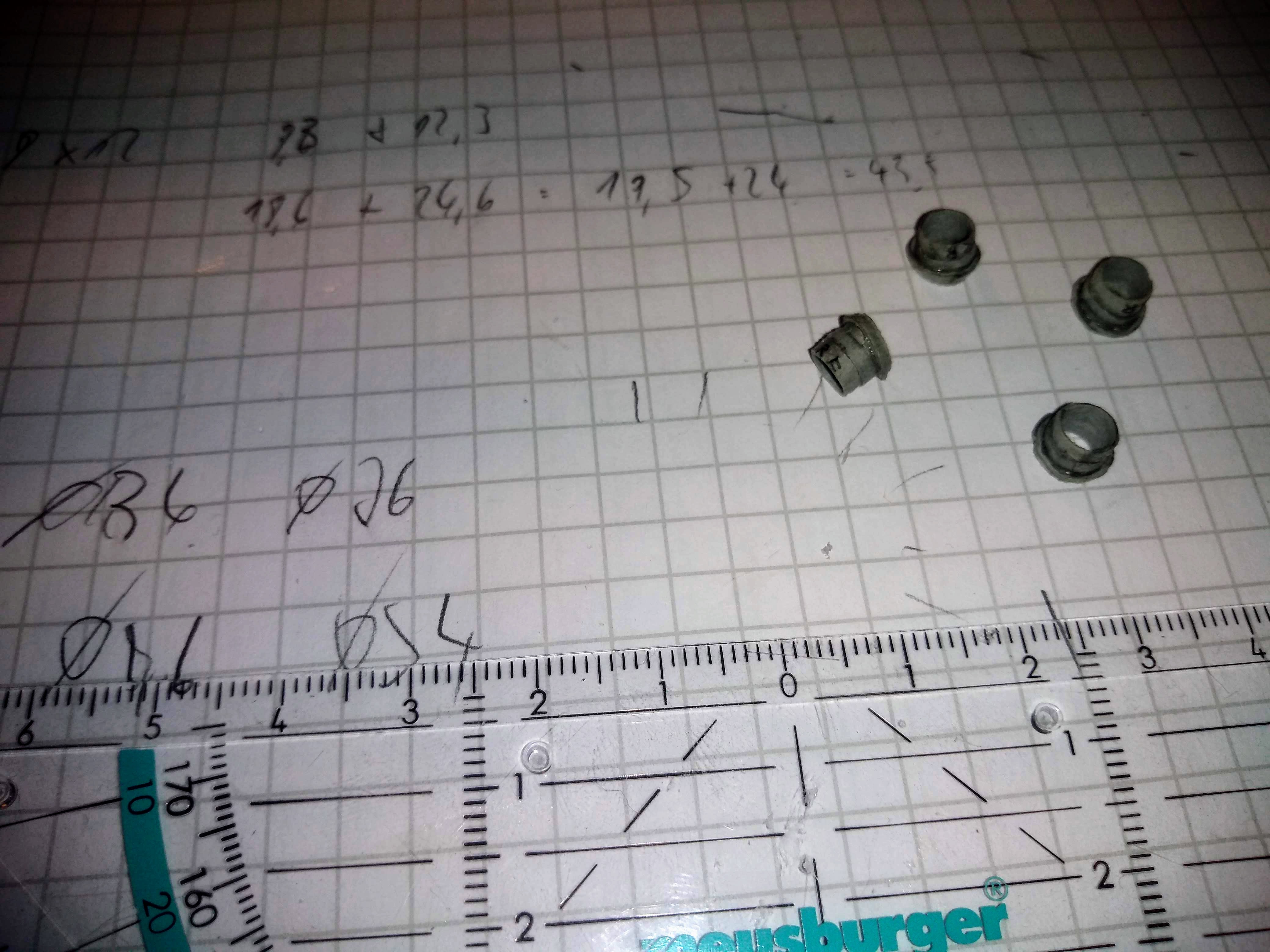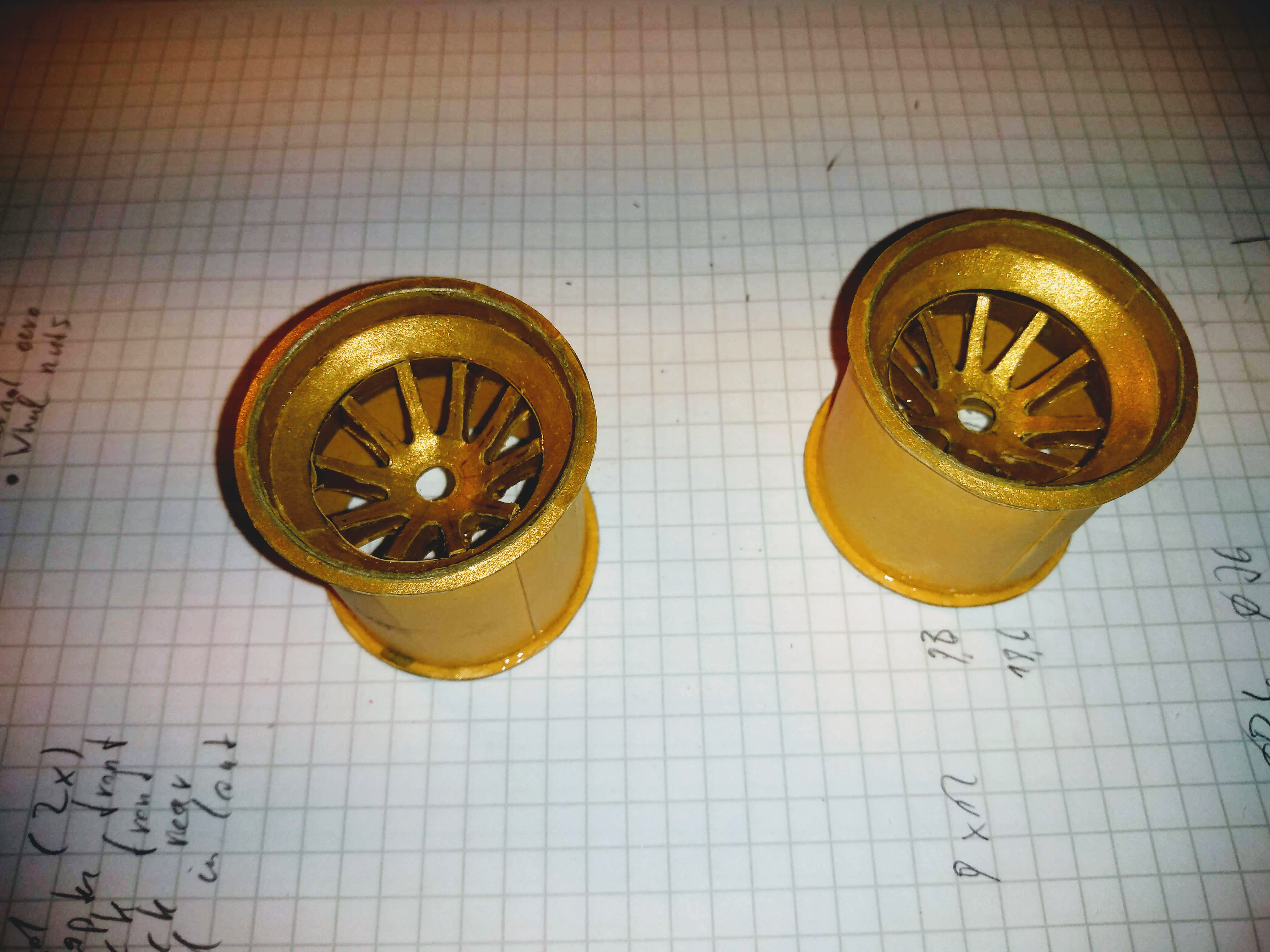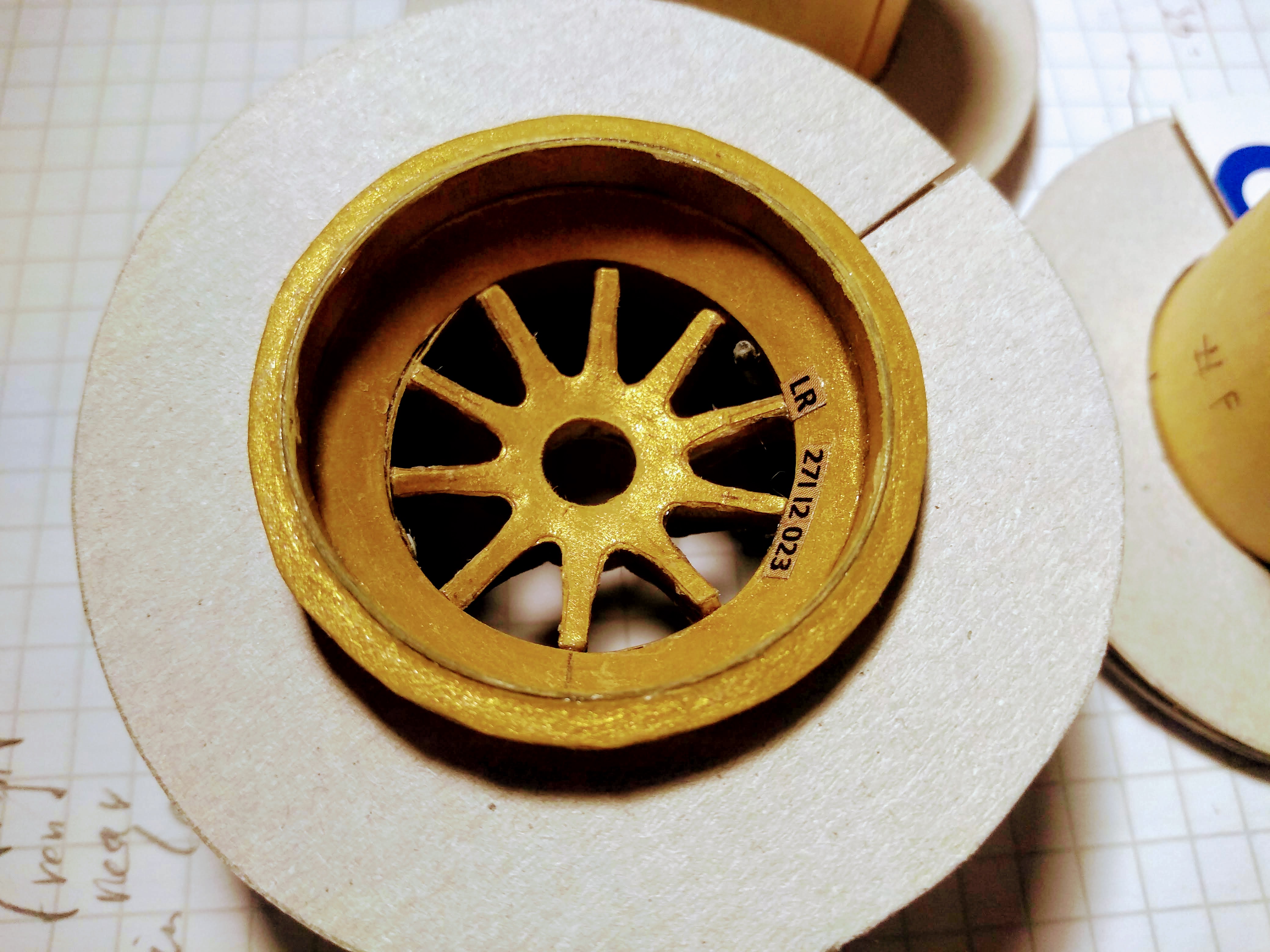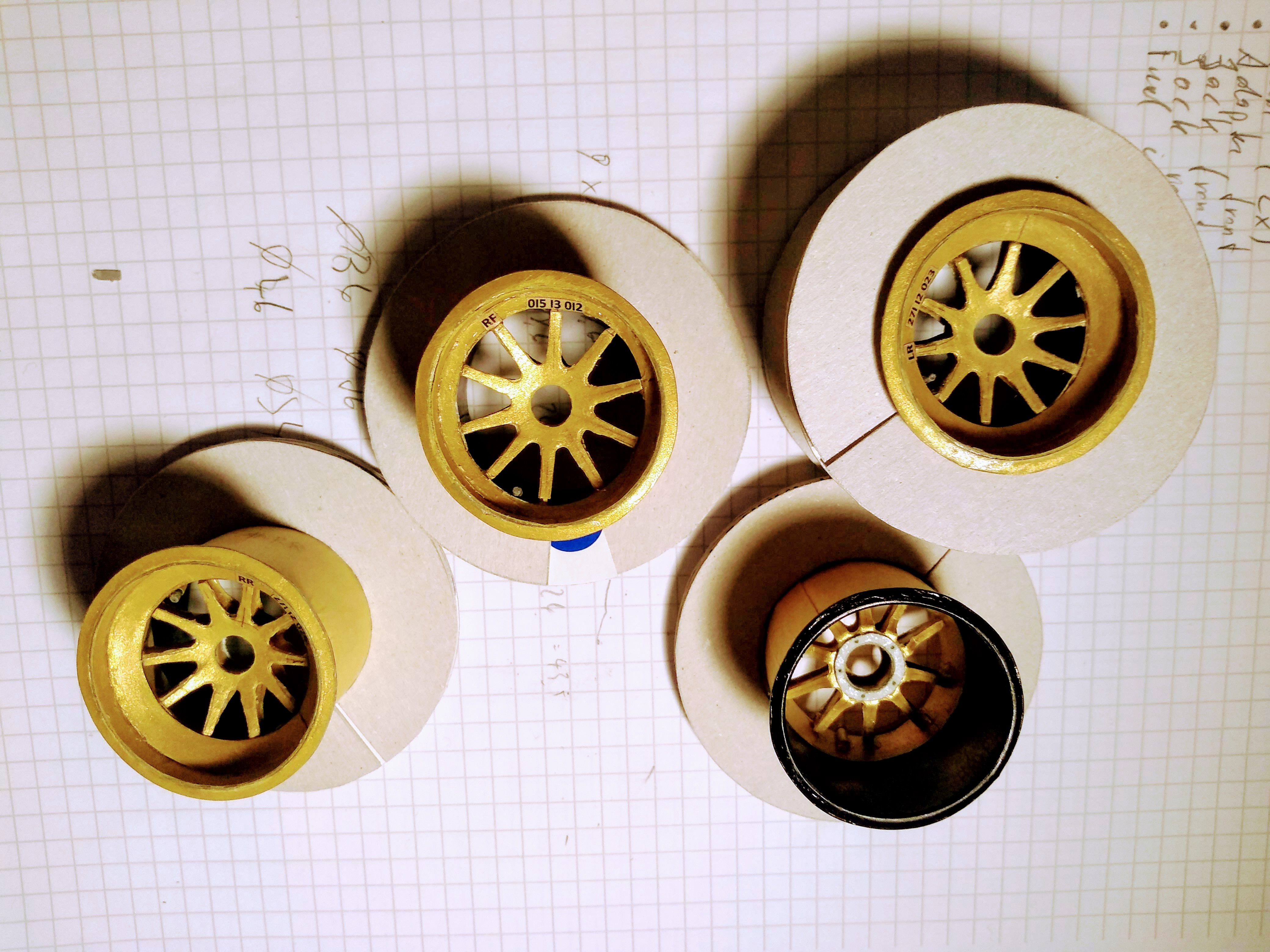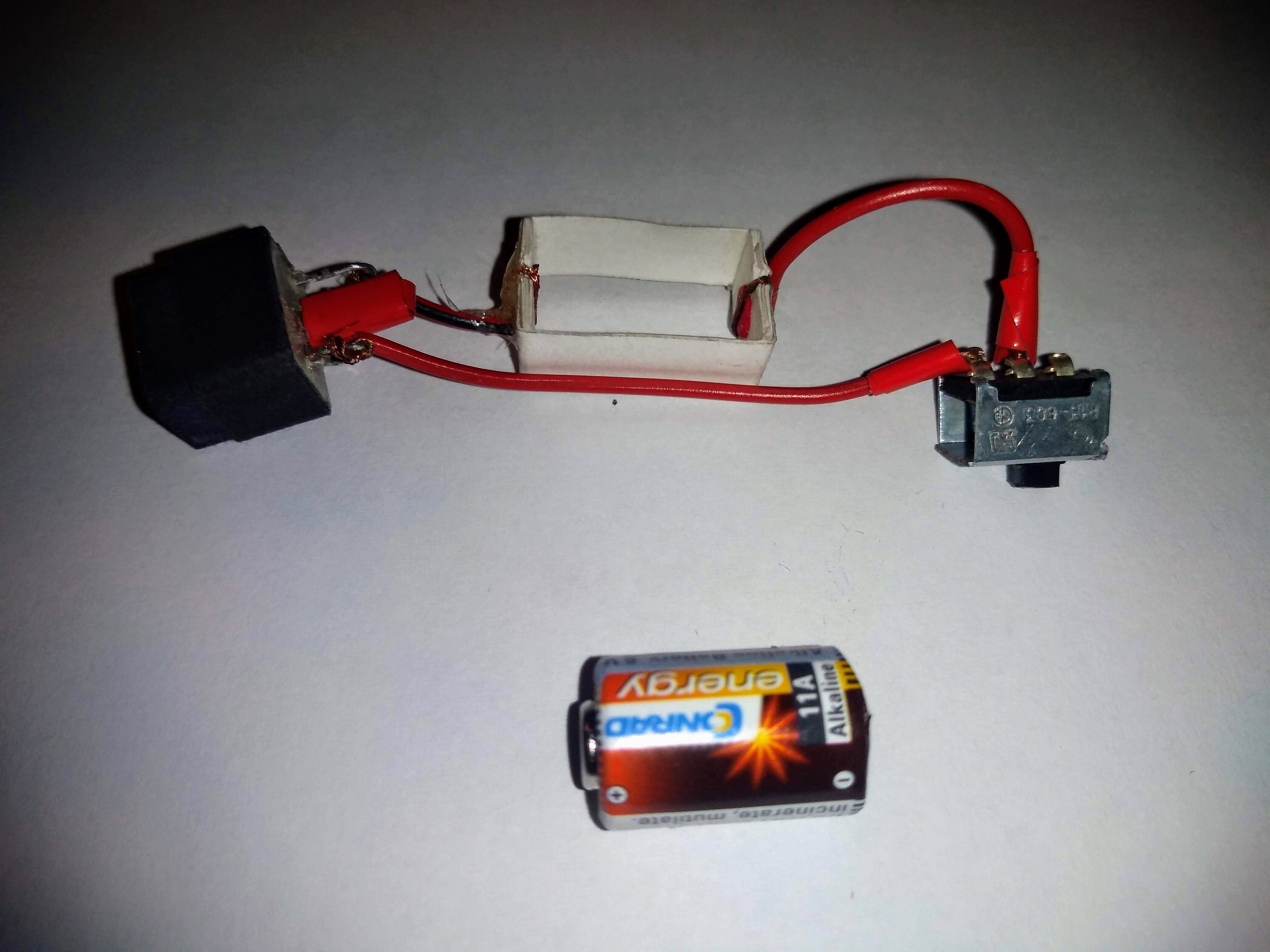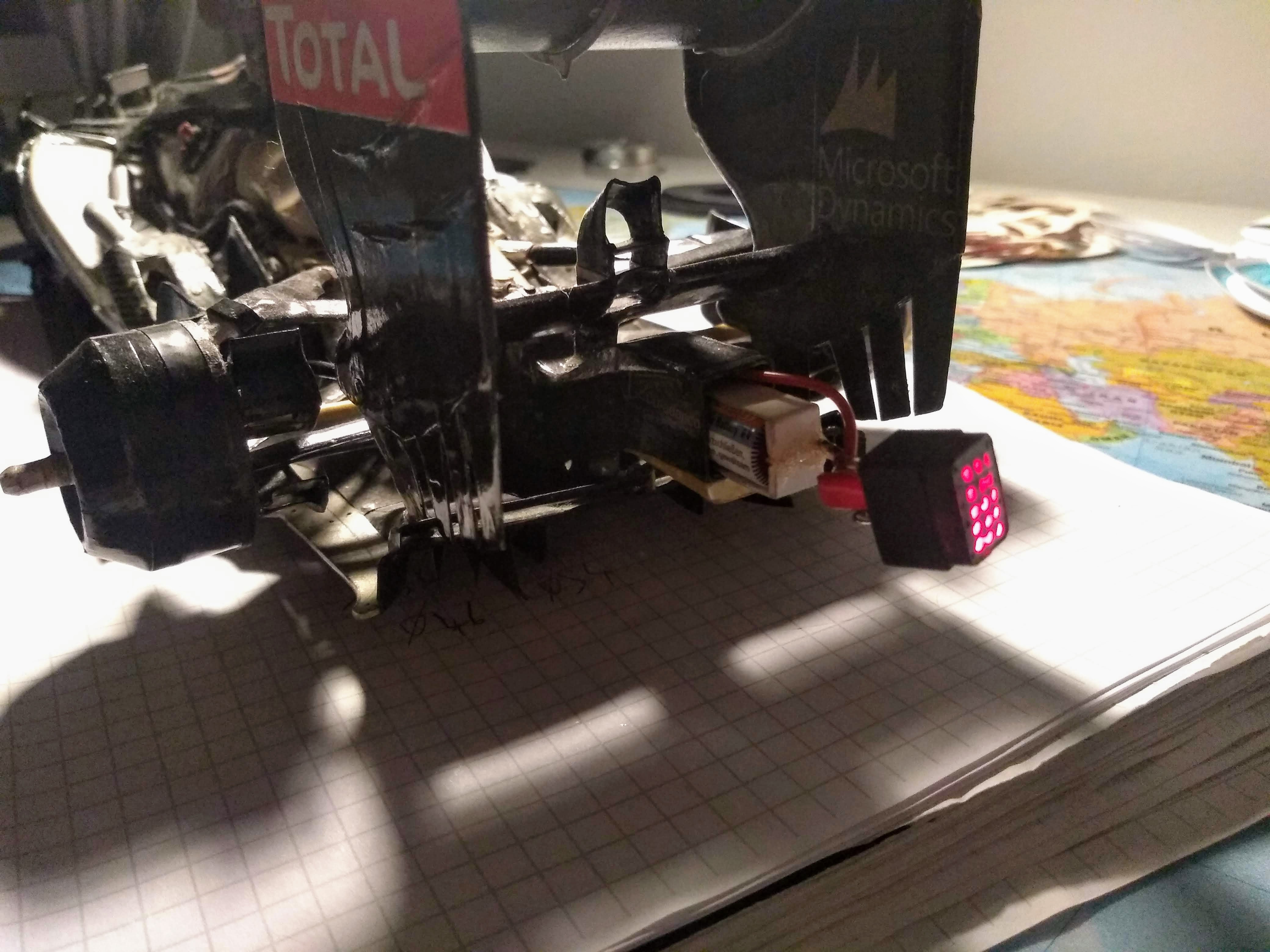Engine cover with PDRS, internal areo devices, fitting last barge boards and starting wheel design.
A lot of time passed by since my last post, mainly caused by moving into a new flat. However, I can report some new bits on the car.
First to the engine cover. Maybe the most tricky part/assembly on the whole car. As mentioned in the previous post, I cannot produce the engine cover exactly to its original dimensions, but I have to adapt it to the bodywork that is already fitted to the car. This is a process, that usually takes a lot of time and several prototypes (up to twelve in case of a Renault R26 ten years ago) are made on my previous cars. On the Lotus I surprised myself in building only two protoype engine covers till I reached the ideal shape. The engine cover consists of five main elements (one cover each side pod/radiators, one over each side of the engine, central piece at the top/airbox) plus the PDRS duct.
PDRS means Passive Drag Reduction System and is actually a passive f-duct system. A few teams (for example Lotus and Mercedes) tried to get them work and actually tested them on track. As this system with its (passive) fluid switch is highly complex and no team was able to get it work properly (as far as I know and remember). Also Lotus aborted the project after FP2 at Belgium GP in 2013. However, due to their limited resources, they used one airbox with its PDRS inlets over the entire season and only closed them, when PDRS was not in use.
Secondly, the shape of the internal areo covers are finished and only needs to be covered with carbon texture. The intention of the internal areo devices is to reduce the drag of the internal airflow. These internal areo covers appeared first in the 2009/2010 season. They mainly cover the engine and secure a relatively clean surface to minimise the drag for the airflow which exits the radiators.
I also started to fit the last barge boards, which I already produced a few month ago, but did not fit them in order to prevent damage in the course of working on the car. Now, the car is almost finished, and I don't need to work at the car directly any more - so no more danger of damaging them.
The last major project are the wheels. Unfortunately I was not able to find a proper gold paper (the Lotus rims were painted in gold each year). So I have to produce the structure of the rims from white paper and cover it with thin gold paper. Not the perfect way...
Remaining to-do’s are:
- Cover internal aero with carbon structure
- Fitting pre-manufactured items (wind screen, top camera, antenna, pitot-tube)
A few pictures from the engine cover production:
First prototype with its different main elements in different colours.
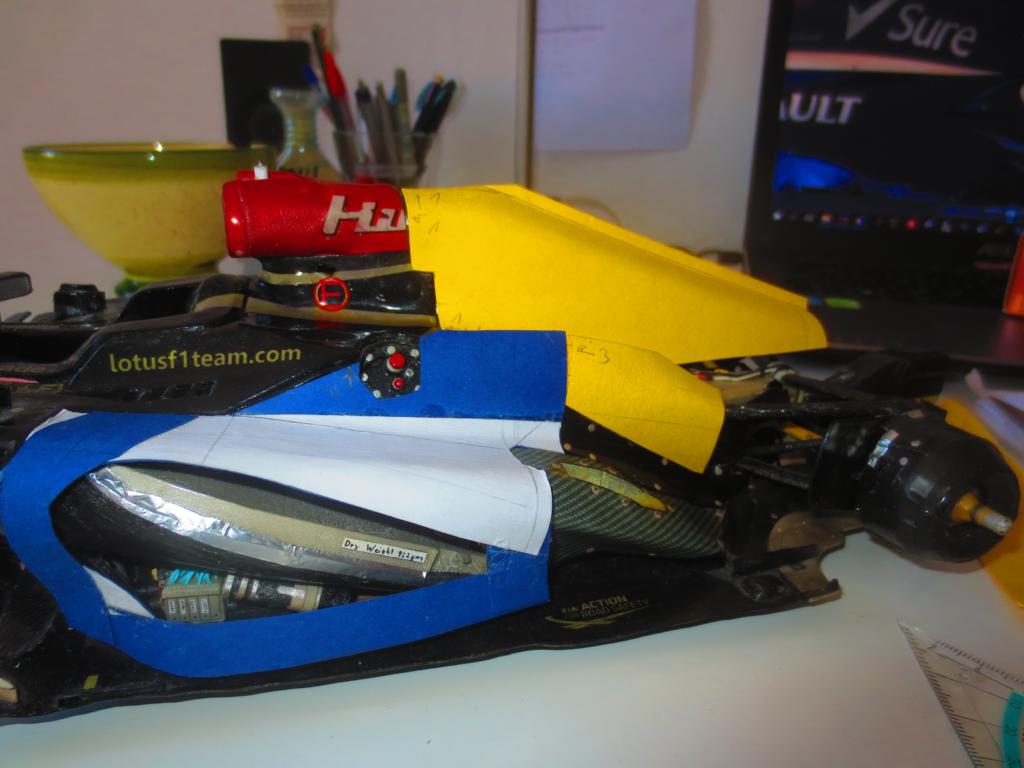
Second and final prototype with its different elements in different colours.
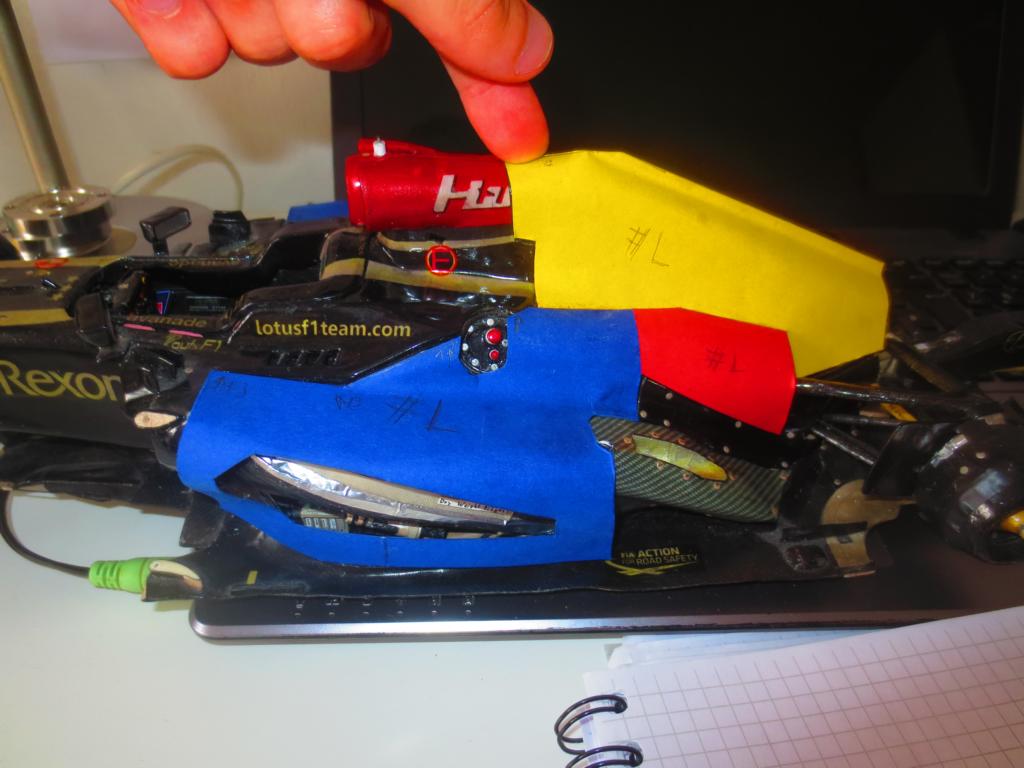
Final prototoype in 2d.
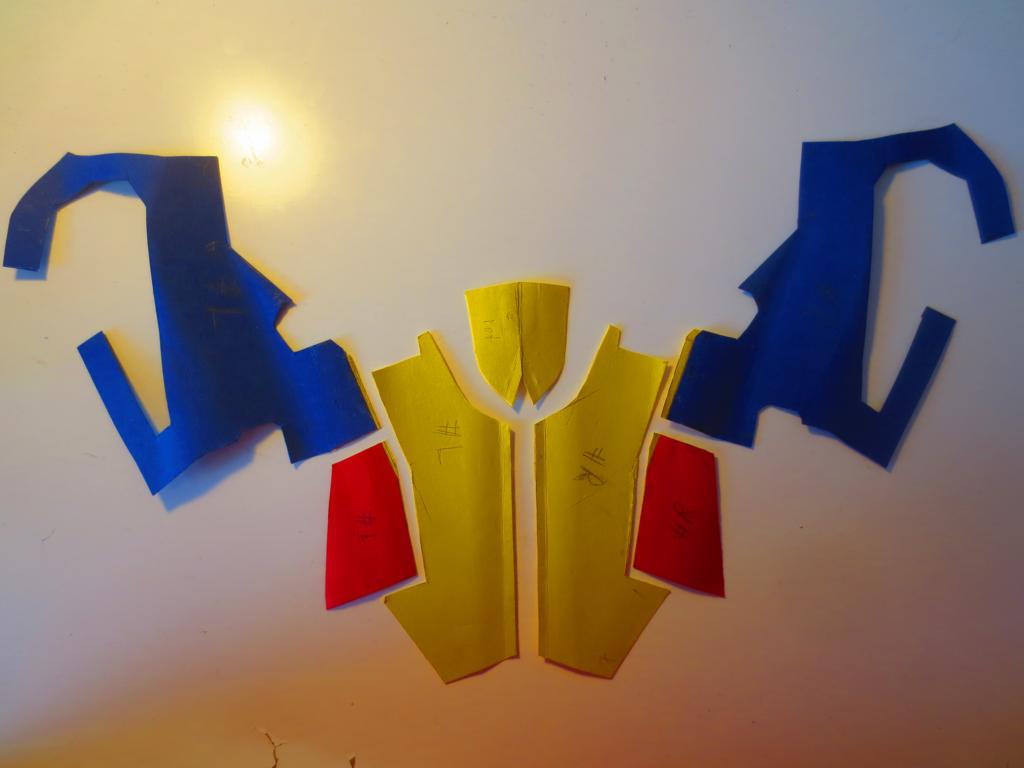
Base elements of the engine cover.
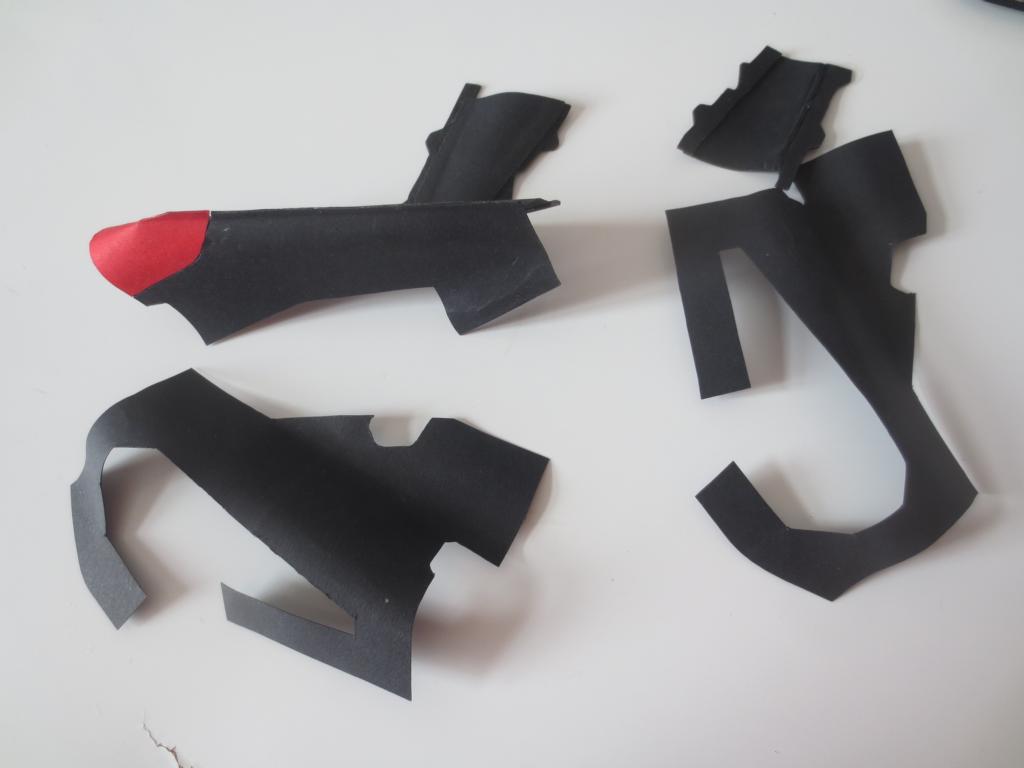
Engine cover on the car for a fitting test - pretty tight packaging.
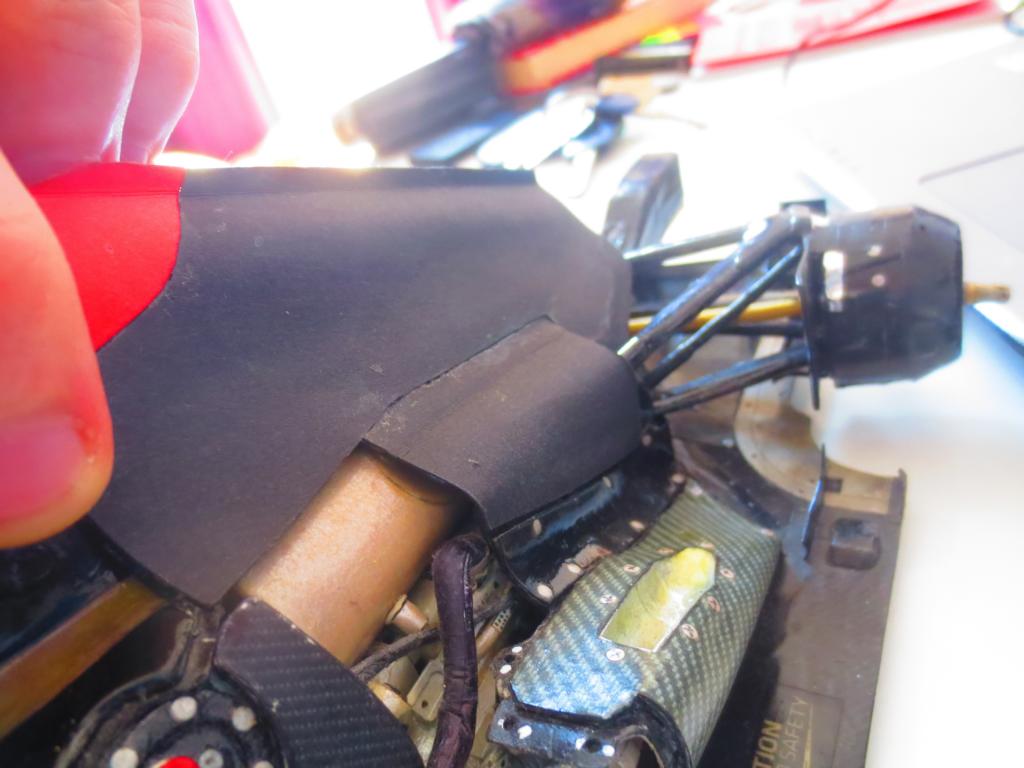
PDRS pipe inside the engine cover.

The PDRS pipe exits at the back of the engine cover and points towards the rear wing.
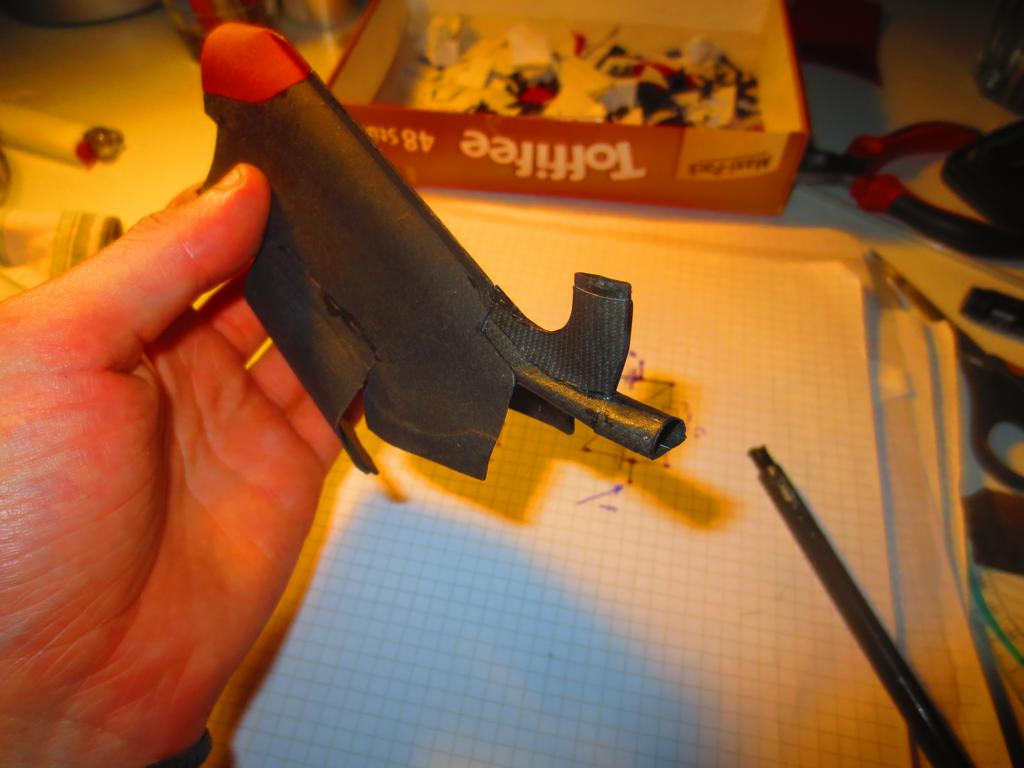
The engine cover on the painting jig.
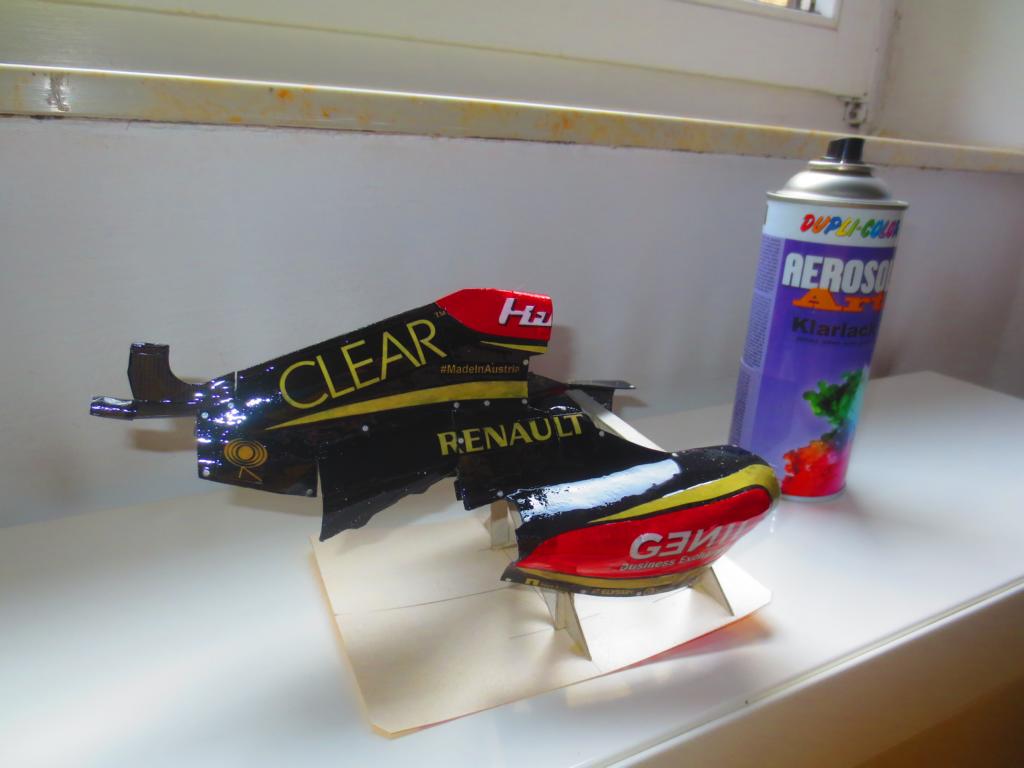
Two more of the finished engine cover.
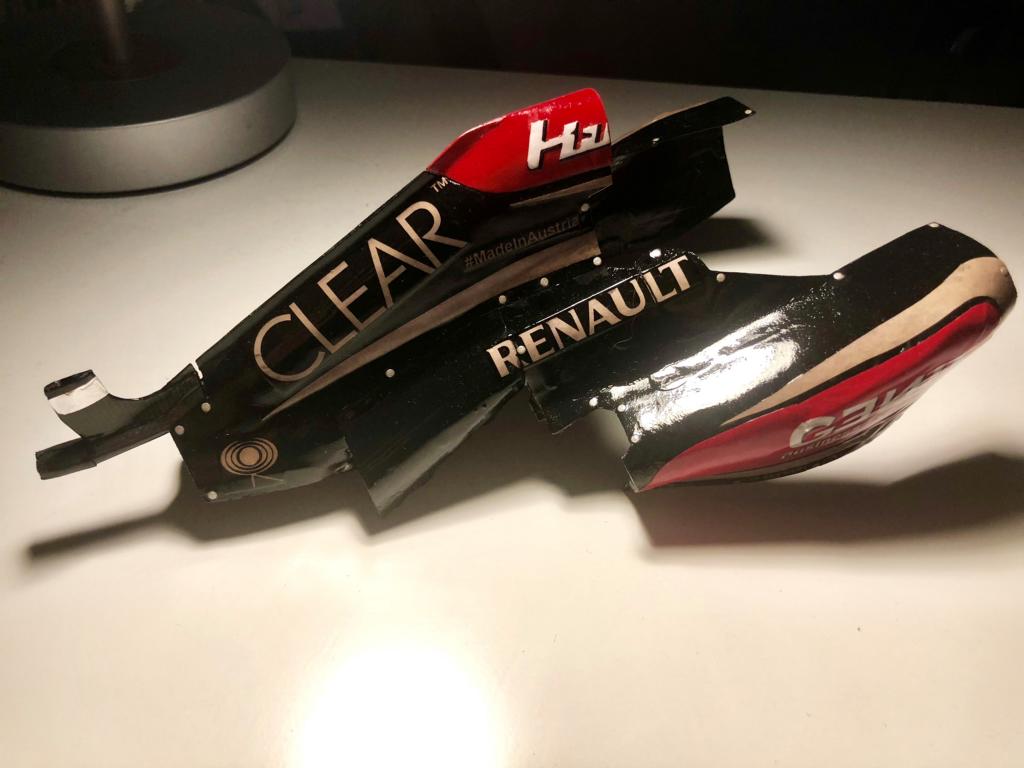
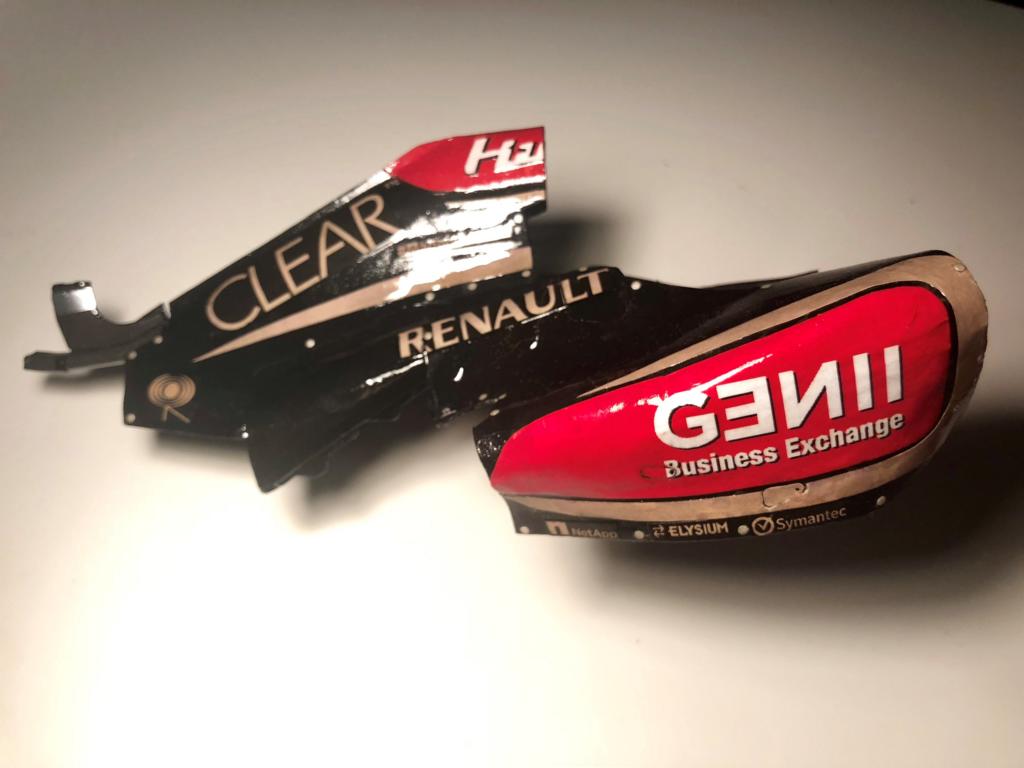
Barge board fitted to the car. The connection strut to the side pod is still missing.
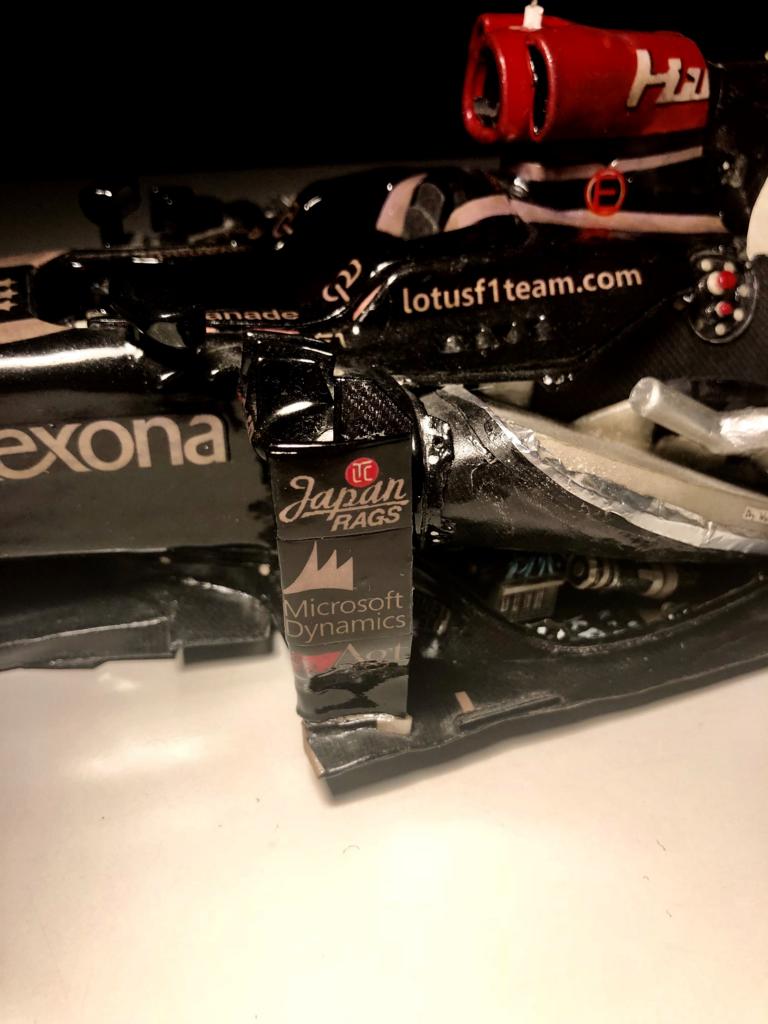
Construction of the internal areo devices.
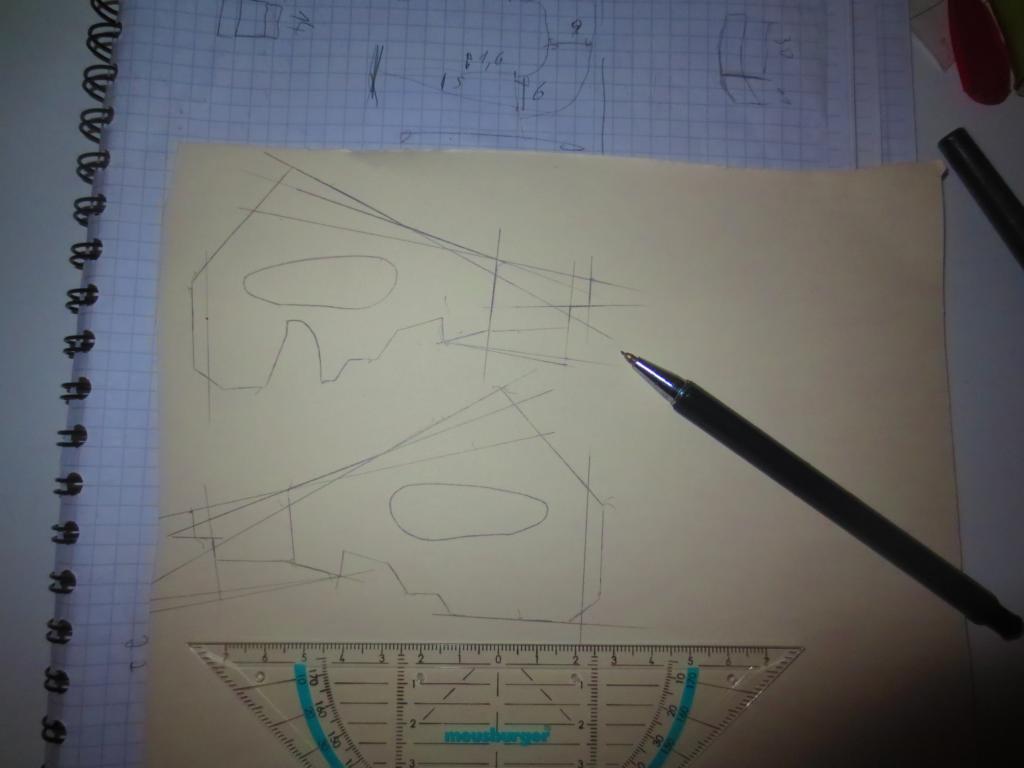
Internal aero device fitted to the car. Only the carbon texture is missing.
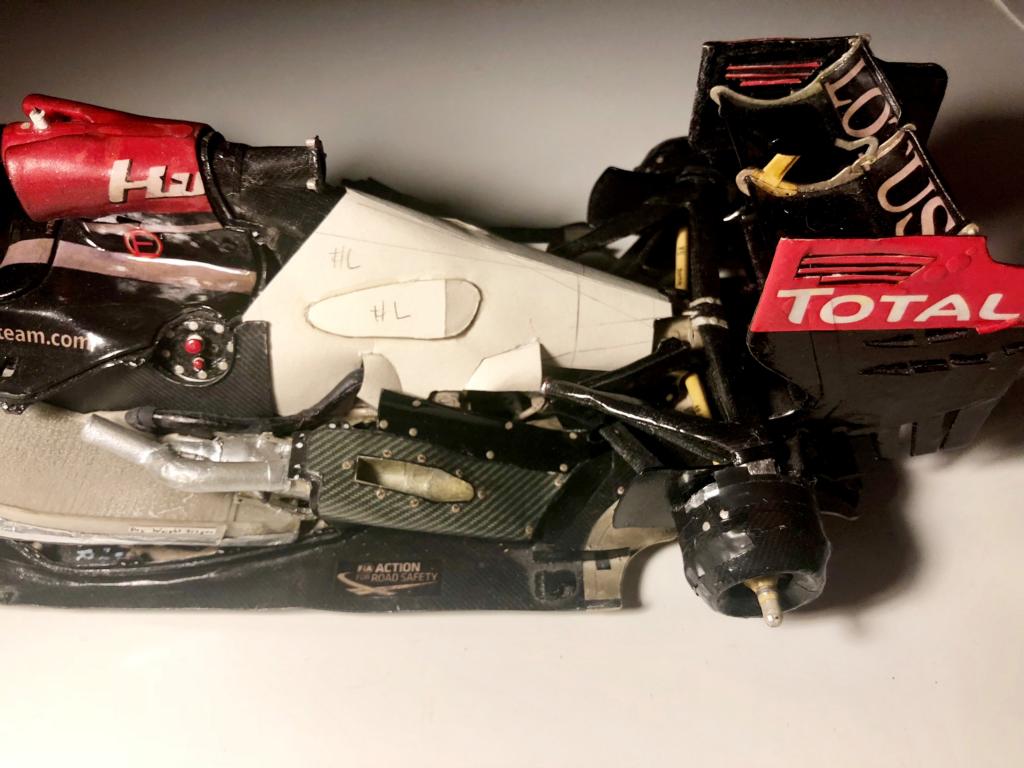
Starting point of the wheels...
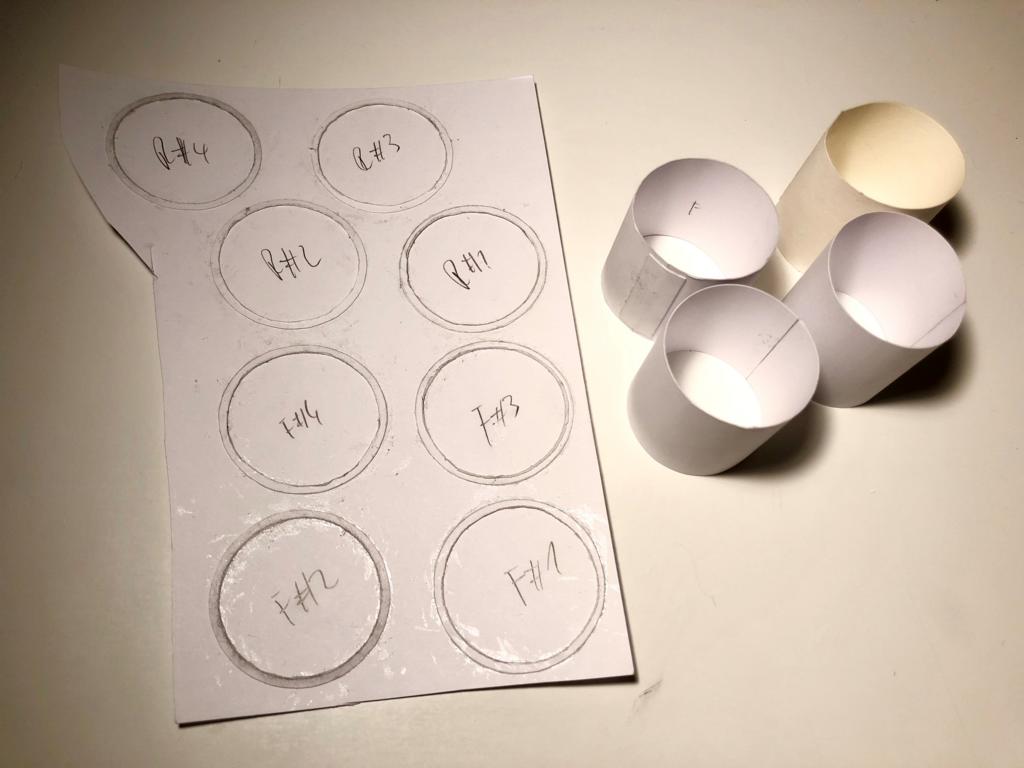
That's it for the moment. Thanks for reading.

Cheers,
Paul




















